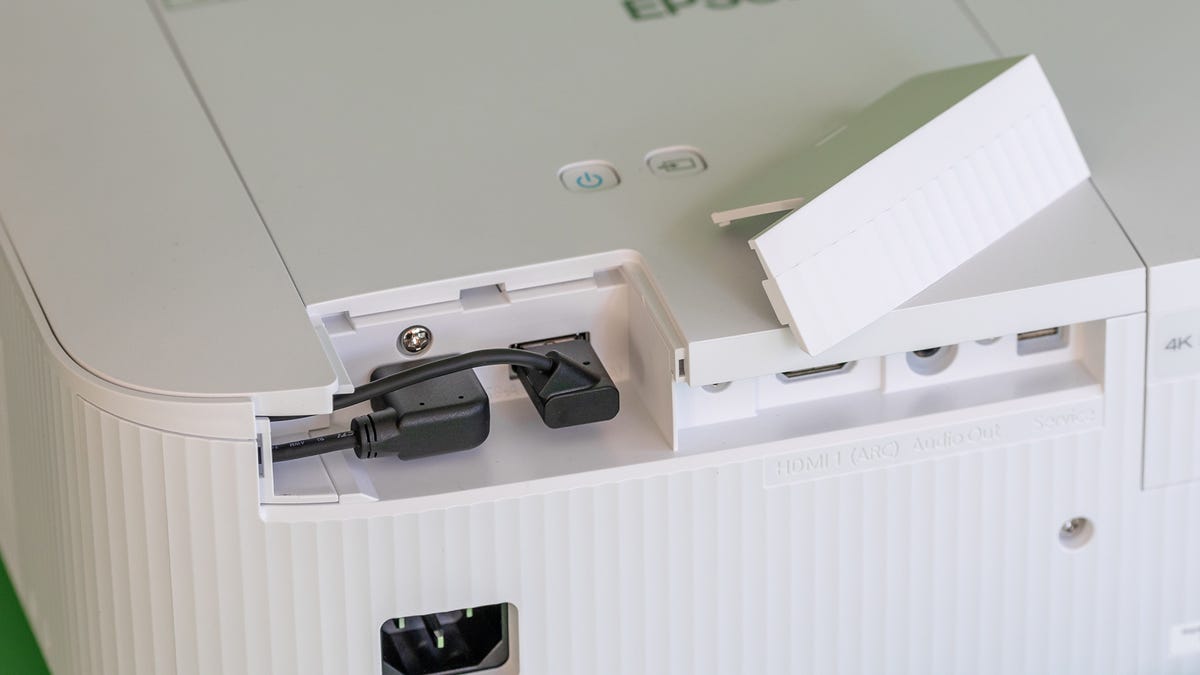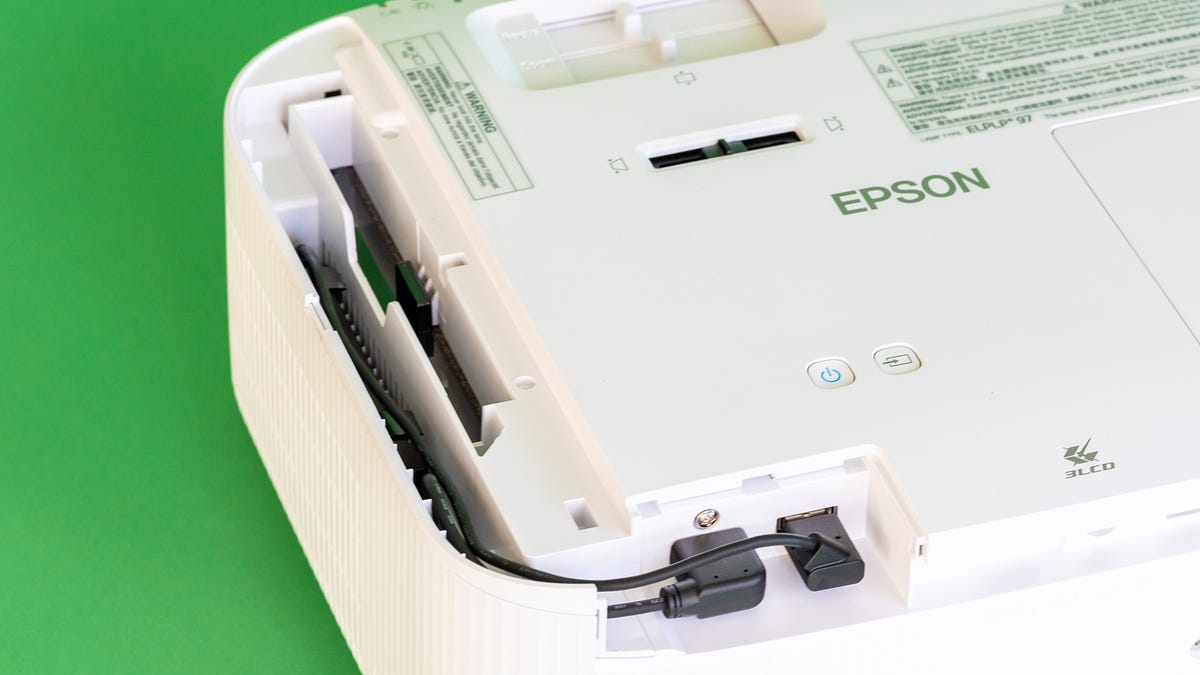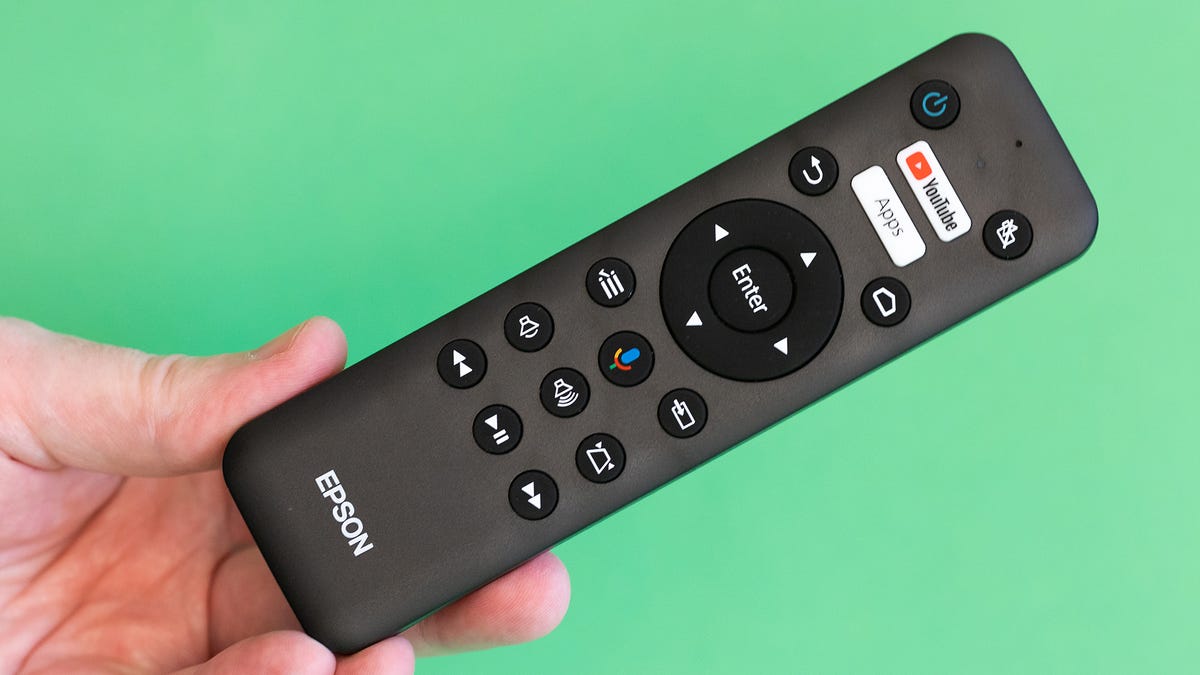Epson makes some of the best home theater projectors, and the Home Cinema 2350 is the least expensive 4K projector Epson has ever made. It’s bright, detailed, and has excellent color accuracy. The new design is compact and attractive. There’s even a full suite of streaming services thanks to built-in Android TV. It combines a lot of what we look for in projectors.
The contrast ratio, however, is quite poor, unlike some of the company’s better units like the 5050UB. So while the image looks good with bright scenes, it struggles in darker ones. Overall, it looks more washed out than most other projectors, including its direct predecessor and cheaper DLP projectors.
Overall, though, the Home Cinema 2350 is an excellent projector at the right price. For a bit more than a decent 1080p projector, you can get this bright, colorful 4K PJ.
Check Out the Compact and Ultrabright Epson 2350 4K Projector
That’s a lot of light
- Resolution: 3840 x 2160
- HDR-compatible: Yes
- 4K-compatible: Yes
- 3D-compatible: No
- Lumens spec: 2,800
- Zoom: Yes
- Lens shift: Vertical, ±60%
- Lamp life (Normal mode): 4,500 hours
The headline feature of the HC2350 is 4K, but what’s just as impressive is the claimed 2,800 lumens. That’s a lot of light from such a small package. I measured nearly 2,100, making it one of the brightest projectors we’ve ever measured at any price. In the less accurate Dynamic picture mode, it’s capable of exceeding its rated brightness. It’s an absolutely dazzling amount of light from such a tiny machine.

The controls on the HC2350.
Geoff Morrison/CNET
Like all lower-cost 4K projectors, the HC2350 uses lower-resolution imaging chips that are rapidly manipulated to create multiple pixels on screen. In this case, two, so the resolution is technically 1080×2 not “4K.” Epson’s far more expensive LS11000 does a similar trick, but each pixel creates four on screen (so 1080×4). I talk more about how that looks below, but the short version is the HC2350 looks more detailed than its 1080p predecessor, though not quite as sharp as some other 4K projectors.
Unlike nearly all DLP projectors anywhere close to the HC2350’s price, it has lens shift. This greatly increases the placement flexibility. Ceiling, table, even shelf mounting are all doable. A reasonably generous zoom all means that you can place this projector in far more rooms, or where in a room, compared with most other projectors.
One thing to consider when you’re deciding where to place/mount the HC2350: it’s loud. In the highest brightness mode it’s like a fusion-powered Dustbuster, with tons of light, heat and noise. This is true of many small projectors, but it seems a little more so here. Don’t plan on putting it on a shelf behind the sofa, for instance, not least because it vents a stream of near-plasmic air out of the left front corner (as viewed when looking at the projector). Though I guess if you have a cat or someone who’s always cold, you could consider this a “feature.”
During my testing, after a full day of gaming at the high lamp mode, the 2350 shut itself off due to heat. After a few minutes, I could restart it and it was fine. I wasn’t able to replicate this, but it wasn’t a hot day nor was the room hot. We’ve reached out to Epson and we’ll update this review if we learn more or it happens again.
Lamp life is a little on the low side, at 4,500 hours. Using ECO mode extends that to 7,500. However, as of this writing, the lamp replacements are less than $100, so this isn’t a big deal.
Get your streaming right here

The 2350 has two HDMI inputs, one USB and one 3.5mm analog audio output. The two on the left connect to the included streaming stick.
Geoff Morrison/CNET
- HDMI inputs: 2
- USB port: 1 (2A)
- Audio output: 3.5mm analog
- Internet: 2.4 and 5 GHz
- Remote: 2x, not backlit
Two HDMI inputs are more than enough for any projector, though in this case, one of them is occupied by the included built-in-but-removable streaming stick. Said stick, Epson’s own, runs on Android TV, which should let you stream pretty much anything you want. There’s a USB connection as well, but it’s powering the streaming stick. If you want to use your own streaming device, a small cover on the back opens easily to give access to both connections. A larger cover hides the air filter and the streaming stick itself.
The other HDMI connection has ARC, so you can send the streaming audio back down an HDMI cable to a receiver or soundbar.
Picture quality comparisons
For my comparison, I pitted the 2350 against the HC2250, its direct predecessor, and the BenQ HT2050A, our favorite overall projector the the money. In my initial review, the 2250 was about $200 too expensive for a 1080p projector, especially one that was largely outperformed by the HT2050A. Speaking of, that BenQ is several years old at this point, an eternity in the tech world, but still manages to hold its own against newer, and now higher resolution, competitors. While its price has dropped over the years, it’s still our go-to pick for projectors around $1,000.
The 2350 is about 20% brighter than its predecessor and about 30% brighter than the BenQ. All three can certainly be considered “bright” and have plenty of light for a screen 100 inches or greater. The 2350 really draws the eye though, it’s so bright.

The 2350 has lens shift and a decent zoom.
Geoff Morrison/CNET
The contrast ratio, however, was by far the most noticeable difference and not in a good way. The older 2250 has a contrast ratio half what the BenQ can produce, with the 2350 a third of the 2250. Letterbox bars that are quite dim on the BenQ are noticeable on the 2250 and visibly lighter (not good) on the 2350. With bright content this is less obvious, but the BenQ has much more apparent depth than either Epson. There’s a reason we still recommend the BenQ after so many years, and that reason is contrast. The 2350 ends up looking somewhat flat. Not washed out, but not as punchy as either of the other two.
Contrast is one of, if not the, most important single performance metric for a projector, but it’s not the only metric. The colors on the 2350 are more accurate and more vibrant than either of the other projectors here. This isn’t as huge a difference compared with the difference with contrast and brightness, but it is notable.
While the 2350 is 4K to the BenQ’s 1080p, the difference in sharpness wasn’t as hugely noticeable as you might think. The Epson is LCD to the BenQ’s DLP, and DLP greatest strength is its ultra-sharp images. There’s no motion blur so images with lots of motion tend to look sharper on DLP projectors. However, the Epson has twice as many pixels on screen so despite those pixels arriving via pixel shift tech and 1080p LCD panels, the 2350 is definitely sharper. Slower moving images, especially closeups of faces, look even sharper still. Shots with lots of motion the detail difference is less noticeable, though still there. With all three images adjacent, in order of detail was 2350 at the top, the the BenQ HT2050, then the 2250 looking the softest.

You can access the included streaming stick from removable panels on the top.
Geoff Morrison/CNET
So overall, the 2350 is definitely an advancement over its predecessor, despite the disappointing decrease in contrast ratio. The geriatric BenQ still surprisingly holds its own, despite being down on pixels, brightness and features. Perhaps most importantly, the BenQ currently costs about half the price of the 2350.
I briefly compared the 2350 to the LS11000, just to check the difference between the two versions of Epson’s pixel shift technology. The 11000 is more detailed, but again, not as much as you might think. Since the 2350 does look sharper than the vanilla 1080p of the HC2250, we’ll call this a win for the price.
Unfortunately, I didn’t have the Optoma UHD35 on hand to directly compare. It’s roughly the same price as the 2350, it’s also 4K, but uses DLP instead of LCD. Even without it on hand, we can deduce a lot from its measurements and the issues I found during my review. First, the Epson is a lot brighter. The UHD35 maxed out at approximately 1,500 lumens to the Epson’s 2,000. The Optoma’s colors are good, but the Epson’s are more accurate. The Epson has significantly more zoom range and lens shift, as well as better video processing.

The remote is small and easy to use.
Geoff Morrison/CNET
The two ways the Optoma is arguably better is with contrast ratio and detail. I measured nearly double the contrast compared with that of the Epson. This will likely be noticeable, but keep in mind that the Optoma’s 649:1 still isn’t great. Both will look washed out compared with the BenQ and pretty much any modern TV.
In terms of detail, every 4K DLP projector I’ve reviewed has looked sharper, side-by-side, compared with every 4K LCD I’ve reviewed. So it’s not a stretch to assume the UHD35 would look sharper than the 2350. That said, it would be fairly close. Plus, resolution isn’t nearly as important as other aspects of picture quality.
All said, I’m comfortable recommending the Epson over the UHD35 since for most people the extra brightness is going to outweigh the slightly better contrast ratio and detail.
Budget-ish, bright 4K

Lots of heat from the vents on the left.
Geoff Morrison/CNET
It wasn’t long ago that a “budget” 4K projector still meant more than $2,000. The Optoma UHD35 certainly moved the needle, as have a few projectors since. Last year’s 2250 was a good projector, but overpriced. Instead of correcting toward price, Epson added more features and moved slightly upmarket. It’s a strategy that has worked for countless companies in the past. The 2350 is one of the few 4K projectors around $1,000, so I’d bet this shift works well for them.
In some ways, the performance of the 2350 is a step back, increasing brightness and resolution at the cost of contrast. At the end of the day, though, resolution and brightness are the two main things that sell projectors, even though contrast is what separates the best from the rest. At this price all projectors have one or two negatives due to their cost, so it’s all a balancing act.
Which is a long way of saying that, despite some flaws, the HC2350 is a definite winner. If the price stretches your budget, the far cheaper HT2050A is an excellent alternative. Otherwise, it’s hard to beat super-bright and colorful 4K for a bit over $1K.



